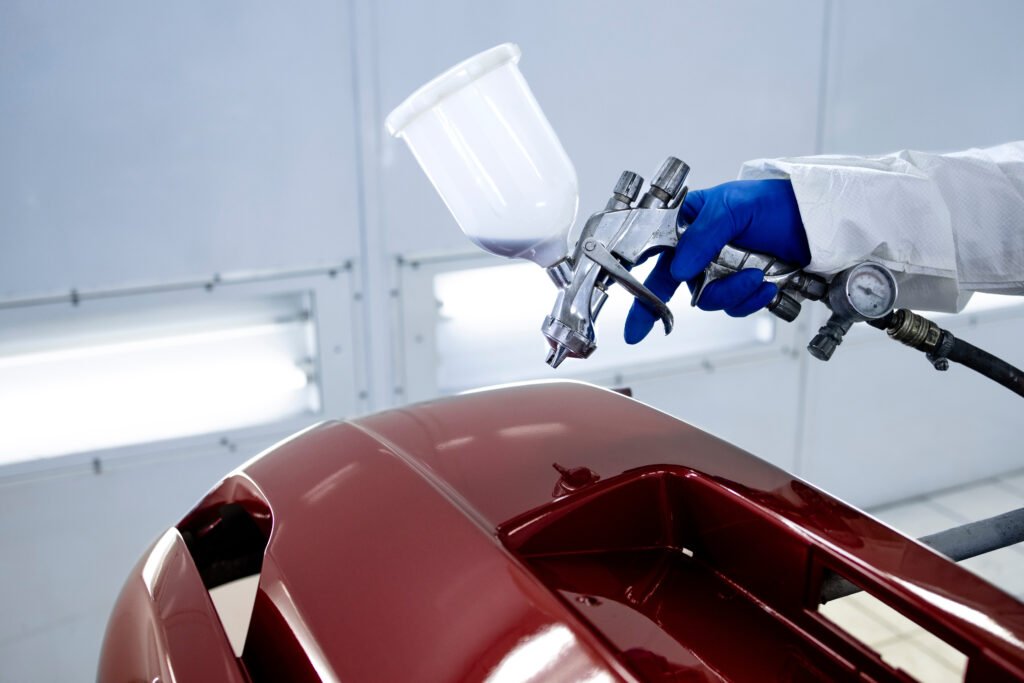
Understanding Air Tools and Their Requirements
Air tools, also known as pneumatic tools, are versatile devices powered by compressed air. These tools can range from simple hand-held equipment like nail guns and impact wrenches to more complex machinery used in industrial settings. The primary advantage of using air tools lies in their efficiency and the reduced physical strain they place on the user, making them indispensable in various applications, including construction, automotive maintenance, and woodworking.
To harness the full potential of air tools, it is crucial to comprehend their foundational requirements. Each air tool operates optimally under specific conditions, including a designated air pressure and flow rate. As such, selecting suitable fittings and hoses is essential for maintaining these parameters. The fittings are connectors that link the air tool to the air compressor, while the hoses transport the compressed air. Improper selection or installation of these components can lead to significant inefficiencies, affecting both performance and durability.
In summary, understanding air tools and their requirements is essential for anyone looking to utilize them effectively. Quality fittings and hoses are vital for ensuring that air tools operate efficiently and safely. Neglecting these aspects can not only hinder performance but may also lead to increased costs associated with repairs or replacements. By prioritizing the right components, users can maximize the benefits of their air tools while minimizing potential risks.
Types of Hoses for Air Tools
Rubber hoses are a traditional choice known for their superior flexibility and durability. They can withstand higher pressures and are resilient against abrasions and punctures, making them particularly suitable for heavy-duty applications. Additionally, rubber hoses maintain their integrity in extreme temperatures, offering impressive performance in both hot and cold environments. However, these hoses are generally heavier compared to other materials and may require additional effort to maneuver, particularly in less spacious work areas.
Flexzilla Air Hose
The Flexzilla Air Hose is probably my favorite hose to use. Its is extremely flexible,’ hints the name flexzilla,” and true to its name it is very comfortable to move the work site and it is also extremely lightweight.
When considering hose sizing and length, it’s essential to select the appropriate diameter and length that not only maximizes tool performance but also enhances user convenience. A hose that is too long can lead to unnecessary pressure drop, impacting the efficiency of air tools. Similarly, the diameter should match the specifications of the tool to ensure optimal airflow and performance. Understanding these factors is critical for optimizing the effectiveness and longevity of air tool operations.
Essential Fittings for Connecting Air Tools
When it comes to the effective use of air tools, selecting the appropriate fittings is crucial. The fittings serve as the link between the air compressor and the tools, making sure that air is transmitted efficiently while minimizing the risk of leaks. Among the most important fittings are quick connect couplers, plugs, and adaptors, each designed to fulfill specific requirements.
Quick connect couplers are particularly beneficial for those who frequently switch between different air tools. They allow for rapid attachment and detachment, reducing downtime and improving workflow. These couplers typically come in various sizes and configurations, making it essential to choose the correct type that matches the air tool’s specifications. Additionally, they often feature a locking mechanism to ensure a secure connection, which is fundamental for safety and performance in various applications.
Plugs, usually paired with quick connect couplers, are integral for establishing a reliable connection. When selecting plugs, it is vital to consider the size and thread type to guarantee compatibility with the hoses and the air tools being utilized. Mismatched fittings can lead to air leaks that diminish performance and efficiency. Furthermore, adaptors may be necessary when the fittings do not align, allowing for different types of connections to be joined effectively.
Material choice is another critical factor in the fitting selection process. Options include brass, aluminum, and composite materials, each offering varying levels of durability, corrosion resistance, and weight. The choice of material may also affect the fitting’s long-term reliability and overall performance. Ultimately, ensuring the right fittings are used, which match the thread sizes and specifications of the air tools, will contribute significantly to a leak-free and secure connection, optimizing the overall functioning of air-powered equipment. Also, don’t forget to get some teflon tape for your fittings. Teflon tape should always be applied to the treads of every connecter fitting to avoid air leakage.
Maintenance and Safety Tips for Air Hose and Fittings
Maintaining air hoses and fittings is crucial to ensure their longevity and effective performance. Regular inspections should be conducted to identify any signs of wear and tear, such as fraying, cracking, or bulging. In addition to visual checks, users should also check the fittings for any signs of corrosion or damage. This proactive approach can help mitigate risks associated with using compromised hoses or fittings.
Proper storage techniques play an important role in maintaining air hoses and fittings. After use, hoses should be coiled properly and stored in a dry environment, away from direct sunlight, chemical exposure, or sharp edges that may cause damage. Using hose reels can provide an organized method for storage while protecting the hoses from kinks and abrasions. Keeping air tools and their accessories in a dedicated toolbox or space can also help reduce the chance of misplacement or damage.
Common issues such as leaks and kinks can be managed effectively with prompt troubleshooting. A simple method for detecting leaks is to apply a soap and water solution to the fittings; bubbles that form indicate a leak. If kinking occurs, it’s essential to gently unwind the hose without applying excessive force, as that may further damage it. Users should replace worn fittings and hoses with high-quality products that help ensure a secure and durable connection. When selecting fittings, look for brass over aluminum for increased durability and a tighter seal.
Why Every Air Compressor Needs a Dryer
Let’s face it: no one likes a soggy air hose. An air compressor dryer system is essential for preventing moisture from ruining your precious equipment. Think of it like a spa day for your hoses! By eliminating humidity, you prolong the life of your air tools, ensuring they perform at their best. And who wouldn’t want their tools to perform optimally? Moisture is the enemy, and with the right dryer, you’ll find yourself saying goodbye to rust and corrosion!
Safety is paramount when using air hoses and fittings. Always handle hoses with care and avoid dragging them across rough surfaces that may cause cuts or abrasions. When disconnecting hoses, do not point them at yourself or others, as the pressure can cause injuries if released suddenly. By adhering to these maintenance and safety practices, users can enhance their operational efficiency while minimizing risks associated with air tools.




















Leave a Reply